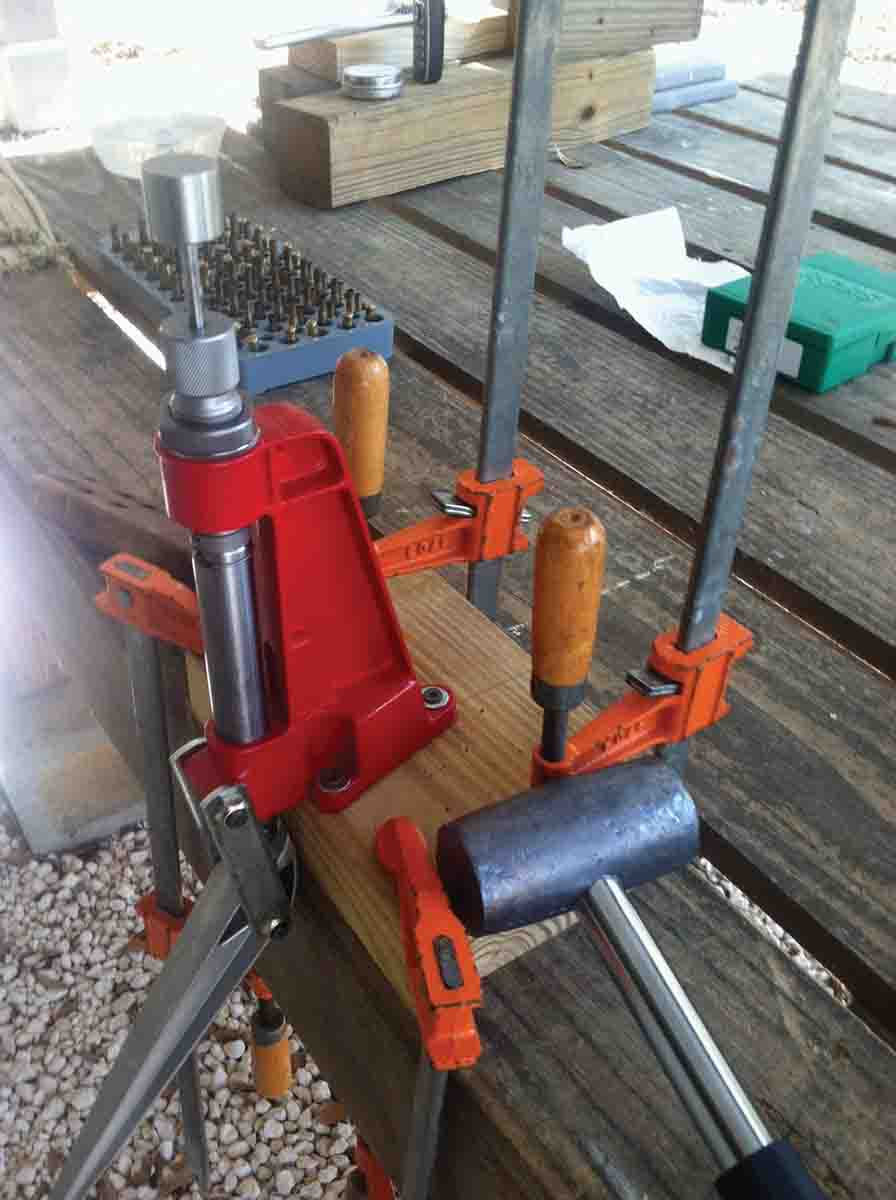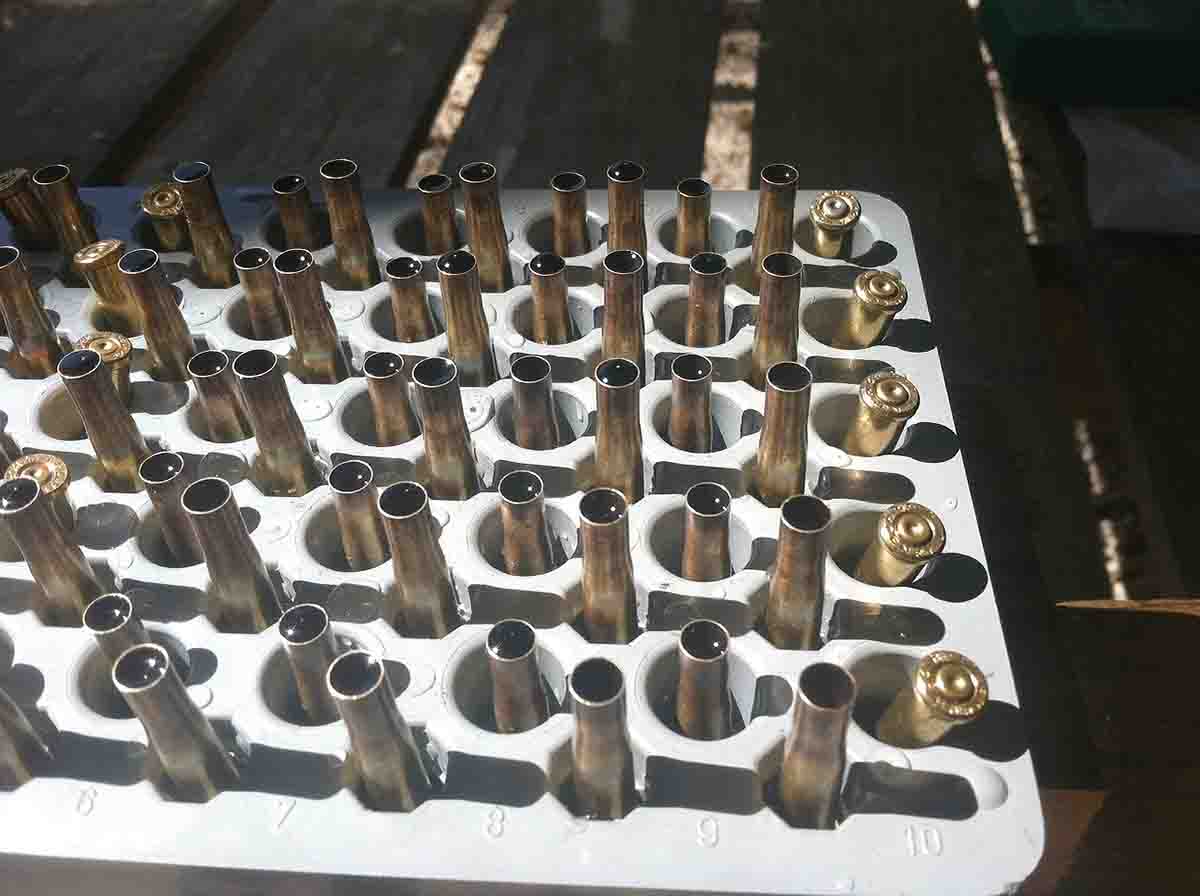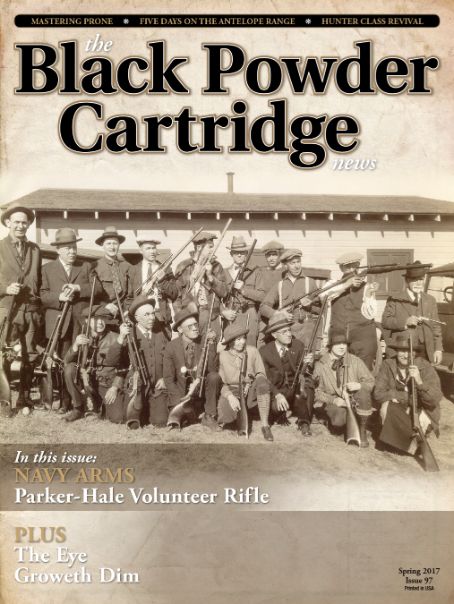Good Ideas Are Immortal
feature By: Dan Hilliard | April, 17
Somewhere during the latter part of the twentieth century, my shooting moved to a new chapter, and I found myself fireforming cases for a new chamber in a Ruger No. 1. Gone was the .22 Hornet, in was the K-Hornet. It was a simple and enjoyable journey that gave justification for many trips to the range.

Just a few years ago, a treasured relic of yesteryear came into my life. A Model 54 Winchester in remarkably good condition with a chamber enhanced by none other than Lysle Kilbourn.
The bore and function are flawless. A slugging of the bore indicates a nominal groove dimension of .2225 inch, so in consideration of the scarcity of components in those days, I picked up a Lyman 225438 mould with the intention of preserving my supply of properly dimensioned jacketed bullets by fireforming with cast lead. The first excursion was disheartening to say the least. The necks split in three out of three cases, so I set the Remington brass aside and moved to the Winchester stock. One out of three split, and I consigned myself to the process of annealing brass. It is a process I don’t particularly enjoy, but neither do I embrace the thought of destroying a barrel with such pedigree.
Round three of the fireforming led to improvement but not a solution. Roughly 30 percent of the Remington brass failed and about 5 percent of the Winchester brass did so as well. I was perplexed and frustrated. I revisited the annealing process and found with a second round of treatment, the failure rate dropped to about 15 percent with the Remington brass and less than 3 percent for the Winchester; better, but not good enough. I hope you appreciate that the sample sizes were small, 6 and 12 rounds per brand, respectively, and the loads were mild. Caution is indeed the better part of valor.
After drumming my fingers for a few years, I read a comment on one of the shooting websites regarding Hornady’s custom production of hydraulic forming dies. A conversation with Ben Syring ensued. We had a brief discussion of our wants and needs, and within a few days I forwarded the requisite three fully formed cases with which he would use to develop the form die. Approximately three months later, a package arrived on my doorstep, as did the new press I dedicated to the project.
Mr. Syring suggested little if any potential for collateral damage from water spray, a concept not easily embraced. I mean, really, what could go wrong? He tossed some other suggestions in for good measure, one being the lead hammer. My brass hammer was deemed too coarse for the die, and I was amenable to that thought. We compromised on several things when all was said and done, and I’m grateful for the conversation, if for no other reason than no directions came with the die set. Well, I’ve never been deterred by such formality but sent a prayer of thanks to the heavens for my previous experience with hammer dies.
Your view and needs may differ, but I embraced this as an outdoor project. I doubt my style would be viable around Great Falls, Montana, in the winter. Regardless of all that, I’ve always viewed instructions as a springboard to innovation, not a limitation. As an example, I was once sternly counseled about the impropriety of flying choppers inverted, but that was a long time ago in a land far away.

So, how does it work and what happens? The capped and water-filled case is seated in the die (Ready!), the ram is inserted in the die (Set!), and the ram is whacked smartly with the hammer (GO!). It does not require great violence. I found that three drops of the hammer from a height of about 12 inches with muscle assist adequate to do the job. It might even be that two strikes of the hammer will do the trick. The first strike will settle the ram about 50 percent of the travel range, and the subsequent strikes will hardly displace it at all. Yes, there will be some very fine spray or misting of water, but it is minor. I would not do it adjacent to water sensitive tools or components or on high-quality reloading presses, but that is just my way of doing things.
A few notes of caution just for the record.
If the ram of your press does not seat with an over-center toggle, you might want to secure the handle before striking the ram, or at least consider how you physically address the process. The little wooden knob on the Lee press delivers a wicked strike to the crotch otherwise. It’s an action/reaction thing carried to its logical conclusion. By that I mean a physical reaction followed by an emotional epiphany. I used my knee to hold the handle in place on subsequent cases. In addition, if the press’ ram does not remain fixed, you will likely wind up with short-necked cases and incomplete forming. The remedy for that is your sizing die, not more blows with the hammer.
Just because you have seated a spent primer in the case, do not assume the case is watertight – some of them leak. If the ram begins to settle before the first strike, refill with water and administer the first blow with alacrity. That will seal the primer/case, and life returns to normal after the fact. Well, as normal as can be expected when a grown man is forming rifle cases with water and a hammer. With that said, do not strike the ram with full force before the case is sealed. If, after the first blow the ram commences to settle of its own accord, it means you have a leak somewhere, possibly due to a split case. Inspect and detect, the prescription is up to you.
I chose to place a small piece of wood between the ram and hammer, mostly because it eliminated the need to re-form the hammer face after hundreds of blows. It also kept my fingers out of the way, as they were otherwise occupied.
At present I have successfully formed some 200+ Winchester cases and 150+ Remington cases. The loss rate for the Winchester brass is 0 percent, while the Remington brass remains somewhat obstinate with a casualty rate of 5 percent. Better it does this in the die than the rifle.
The interesting point of the exercise was the saving of time, components and dollars. From scratch it took one hour to form 100 Winchester cases as measured by a clock, start to finish, including the setup and breakdown. Compare this if you will, to loading for fireforming, travel to the shooting line, firing and return, and then prepping the brass for round two. Is the die cheap? Not so much, costing $180 plus shipping. If you do a lot of fireforming, it’s a bargain. If you prefer to not destroy the chamber of a quality rifle, it is priceless.


